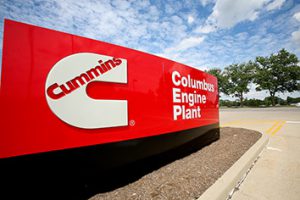Commercialization priority for Lugar energy center
IUPUI unit has ambitious plans even as namesake prepares to step down from long-held seat in Congress.
IUPUI unit has ambitious plans even as namesake prepares to step down from long-held seat in Congress.
Locally based EnerDel, maker of fuel-efficient lithium-ion batteries, is steering away from the disappointing electric-vehicle market. Its new strategy: batteries for utilities—especially in emerging markets where electric grids can be unreliable, which increases the need for backup power supplies.
Fuel savings and environmental benefits might not be worth the higher cost of such vehicles.
Environmental control maker Jackson Systems LLC plans to expand its Beech Grove operations, almost doubling its work force and the size of its headquarters by 2014.
Dave Menzer, director of the Sierra Club’s new “Beyond Coal” campaign in Indiana, aims to spark discussion about the health and environmental costs of the state’s bituminous bounty that for years has brought relatively cheap electric rates.
The city is guaranteed $7.5 million in savings over 15 years from a $18 million upgrade of city facilities, and the savings are expected to accumulate further.
A Russian timber tycoon who poured millions into a battery maker with Hoosier roots is the new owner of Ener1 Inc. Boris Zingarevich supplied $50 million for Ener1’s March 30 exit from bankruptcy and is moving its headquarters from New York to Indianapolis—already home to its core subsidiary, EnerDel.
Bright Automotive Inc., an Anderson company that once hoped to become a major hybrid-vehicle player with hundreds of employees in central Indiana, has called it quits after failing to land a $450 million government loan.
Eventually, the system will heat and cool 5.5 million square feet of buildings and save $2 million a year in operating costs.

Cummins has invested about $10 million in 70 projects in its Indiana facilities since 2007, leading to annual savings of $4 million.
Ford touts new models of electric and hybrid vehicles in seminar co-sponsored by the Greater Indiana Clean Cities Coalition, which promotes alternative fuels.
An Indianapolis developer says it is still trying to arrange financing to build wind turbines on farmland owned by Purdue University and nearby privately owned property in West Lafayette.
Designation to east-side project would go beyond building certification.
The Holy Grail of energy efficiency has yet to arrive, but pieces are falling into place.
Indianapolis’ movement toward installing green roofs on commercial buildings has advanced slowly but steadily, in spite of a poor economy and the availability of cheaper (at least in the short run) alternatives.
Companies promising thousands of green jobs in Indiana are playing a high-stakes waiting game as federal officials consider the fate of at least $600 million in loan guarantees.
Ball State University leaders hope the school’s $87 million geothermal plant paves the way for others like it—as an economic-development opportunity as much as an environmental effort.
U.S. truck makers are expected to improve tractor-trailer fuel economy by about 20 percent by 2018, saving $50 billion in fuel costs over five years and decreasing carbon-dioxide emissions, President Barack Obama said.
Wind turbines, a rare sight downtown, have finally been added to The Nature Conservancy’s high-profile building on Ohio Street.
Carrier Corp.’s plan to invest $36.5 million in its Indianapolis plant hinges in part on how well consumers take to a new platform of high-efficiency furnaces.